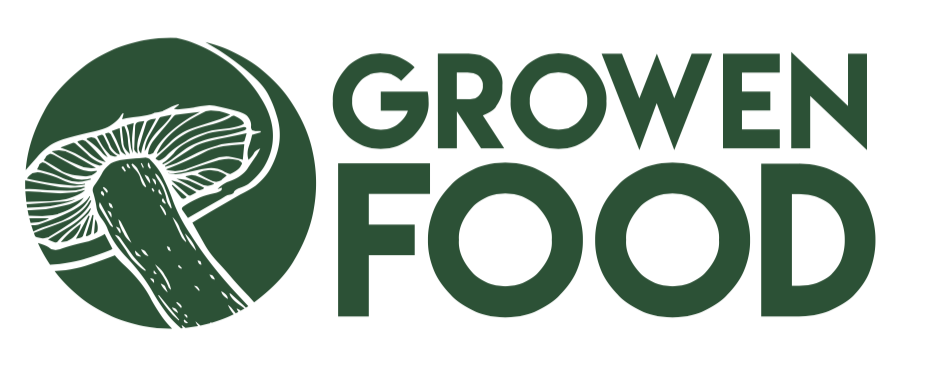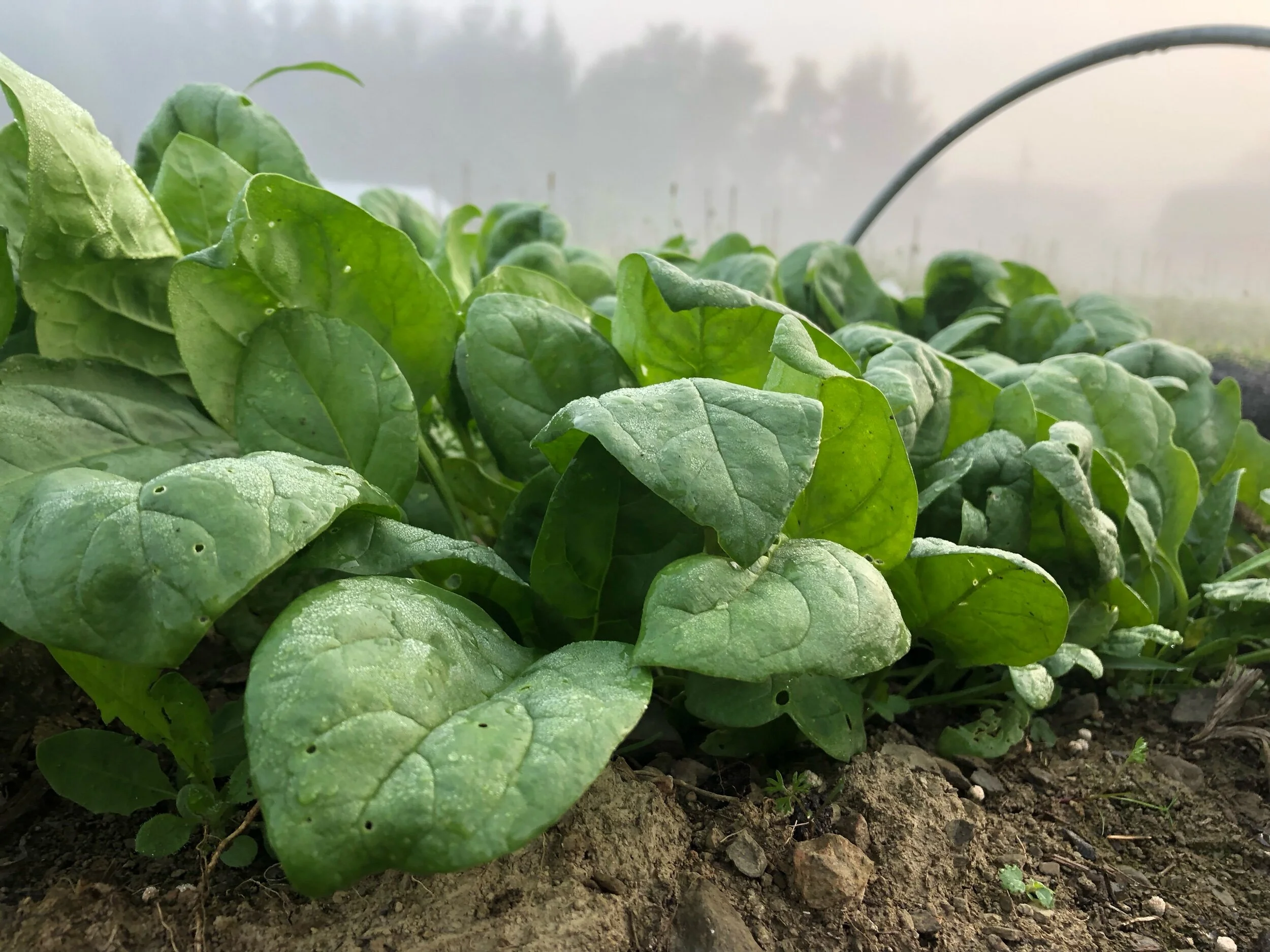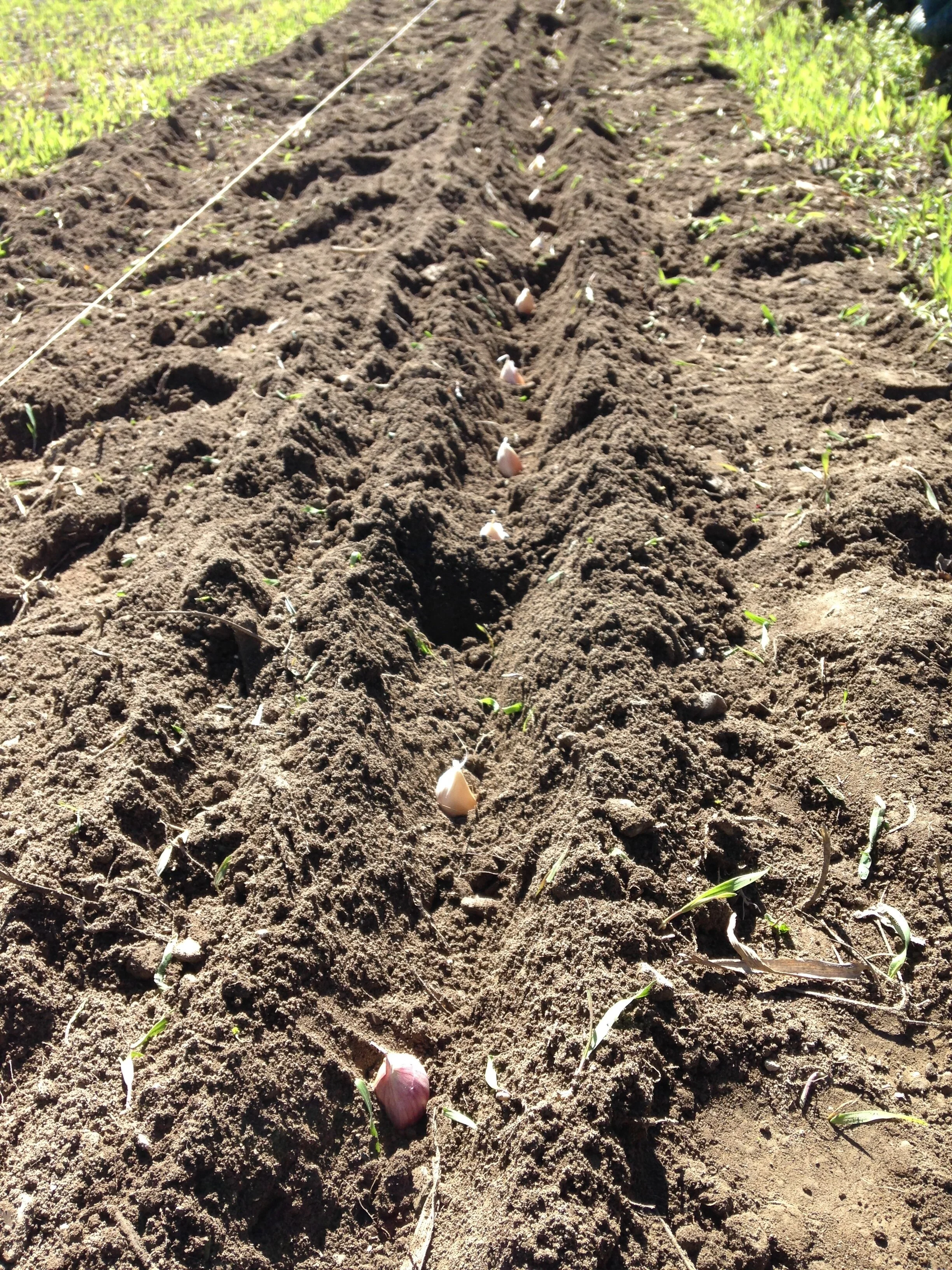Mushrooms & Veggies: Here's where they meet
The first seed to go in the ground wasn’t even technically a seed. What we planted first, before ever moving back to the farm, was a clove of garlic.
Close-up of some late-season spinach
Buried into the soil and under a layer of straw in October, a bed of hard-neck garlic was what we first sowed into Dad’s garden. Our hope was that even if none of our other plans came to fruition the following season, which many didn’t, we’d still have that garlic to pull the following July. Sure enough they grew, marvelously at that, and we still rely on that as part of our seed stock five generations later.
From the initial planning phases, we wanted garlic to be our star. Who wouldn’t? We ate that with everything. In terms of crop management, too, garlic is fairly easy. Plant and mulch at the end of one season and watch those stalks burst through the ground at the start of the next. We wanted our other crops – garden vegetables, flowers, maybe even mushrooms – to complement. Oh, how plans change.
We call that first season “Year Zero” because it was a deep dive into learning, while maintaining full-time jobs. No markets or sales to start. With any previous experience before that strictly limited to backyard gardening, a landscape crew and restaurants, we had a lot to learn about what it takes to grow food for a living. On a rhythm and flow for weekly markets, now that was a-whole-nother lesson. We didn’t solve it all that first year, certainly; it’s an ongoing process.
The first row of garlic we planted. We space them a little closer nowadays :)
Even if our garlic grew like we’d hoped – and it mostly did – we knew we’d need more variety. So our vegetable gardens expanded down into the barnyard where Dad’s cows grazed in the 1980s and ‘90s and the mushroom logs started to pile up. It soon became obvious that while the garlic was a welcome harvest that mushrooms and vegetables were going to steal the show.
It’s the co-dependency of the two that piqued our interest. The more we learned about the plants and the soil the more we learned about fungi, and the more we learned about fungi the more we learned about soil and the plants.
Traditionally farms rely on a vegetable-animal interconnection. Animals eat the veggie waste and then veggies grow on the animal waste. After chasing pigs and chickens the entire first season (Year Zero) we began to wonder...what if we replaced the animal with fungus? It wasn’t that we were opposed to proper livestock farming. No, we just found that it’s a better fit for our land, in addition to lower startup and infrastructure barriers. Put a little more simply, mushrooms are cleaner. We don’t have to worry about treading fresh manure through our gardens. With the varieties we handle, you can even grow our mushrooms right in your kitchen.
The shiitake mushrooms that grow on logs predominately eat fibers from the hardwood as their substrate. Once their grow cycle concludes the spent substrate composts down and eventually goes onto our gardens, gradually adding important organic matter to our soils. When that’s not enough, we import mushroom “soil,” a waste product from larger mushroom farms in the southeastern part of Pennsylvania. That is often a mix of agriculture waste like hay, hulls and manure that is first pasteurized before its decomposed by their agaricus specie of mushrooms. It further ages before it’s spread on our ground.
Diving deeper, we’ve discovered just how important the fungal network below the soil surface is to a healthy plant. It was especially interesting to learn how mycorrhizal fungi attaches to plant roots, strengthening their reach for nutrients and water absorption. To strengthen that underground community, our transplants are inoculated with a mycorrhiza. The top dressing thereafter feeds the microbial life in the diverse soil we’re trying to nurture. Fungi, plants – see they do mesh together well.
Both in the garden and in the frying pan. Similar to how vegetables are a complement to meat or other animal products on our dinner table, there’s a large group of us too that find mushrooms and veggies make quite the pairing as well.
And you know what really ties them all together?
Garlic


